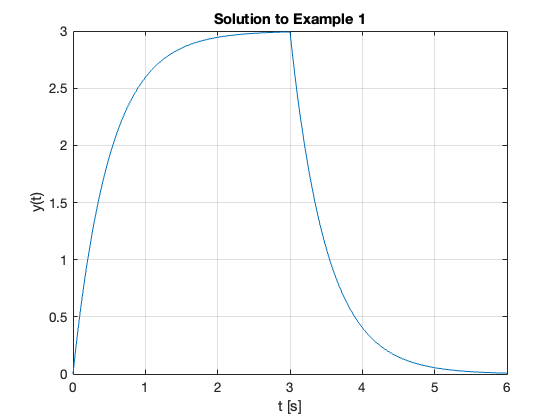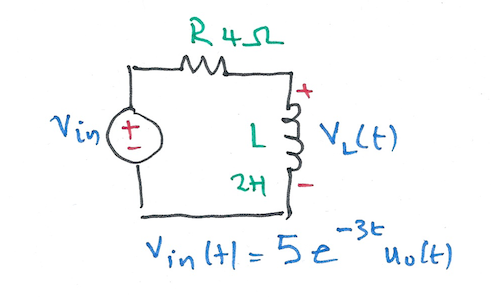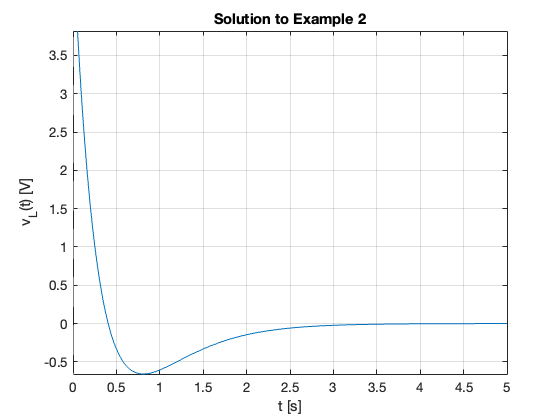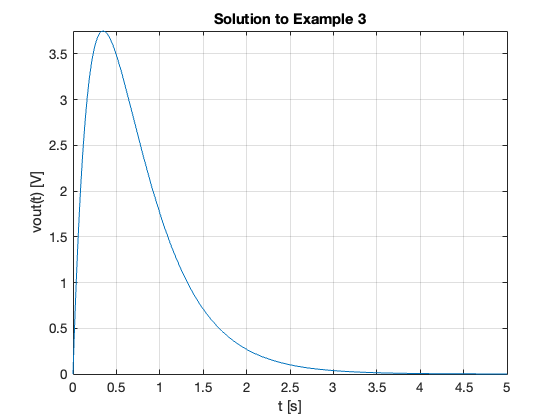Unit 4.3: Fourier Transforms for Circuit and LTI Systems Analysis#
Colophon#
An annotatable worksheet for this presentation is available as Worksheet 8.
The source code for this page is fourier_transform/3/ft3.md.
You can view the notes for this presentation as a webpage (Unit 4.3: Fourier Transforms for Circuit and LTI Systems Analysis).
This page is downloadable as a PDF file.
In this section we will apply what we have learned about Fourier transforms to some typical circuit problems. After a short introduction, the body of this chapter will form the basis of an examples class.
Agenda#
The system function
Examples
The System Function#
System response from the system impulse response#
Recall that the convolution integral of a system with impulse response \(h(t)\) and input \(u(t)\) is
We let
Then by the time convolution property
The System Function#
We call \(H(\omega)\) the system function.
We note that the system function \(H(\omega)\) and the impulse response \(h(t)\) form the Fourier transform pair
Obtaining system response#
If we know the impulse resonse \(h(t)\), we can compute the system response \(g(t)\) of any input \(u(t)\) by multiplying the Fourier transforms of \(H(\omega)\) and \(U(\omega)\) to obtain \(G(\omega)\). Then we take the inverse Fourier transform of \(G(\omega)\) to obtain the response \(g(t)\).
Transform \(h(t) \to H(\omega)\)
Transform \(u(t) \to U(\omega)\)
Compute \(G(\omega) = H(\omega).U(\omega)\)
Find \(\mathcal{F}^{-1}\left\{G(\omega)\right\} \to g(t)\)
Examples#
Example 1#
Karris example 8.8: for the linear network shown below, the impulse response is \(h(t)=3e^{-2t}u_0(t)\). Use the Fourier transform to compute the response \(y(t)\) when the input \(u(t)=2[u_0(t)-u_0(t-3)]\). Verify the result with MATLAB.

Solutions see: Worked Solutions
MATLAB verification of example 1#
format compact; % reduce whitesace for textbook presentation
syms t w
U1 = fourier(2*heaviside(t),t,w)
U1 =
2*pi*dirac(w) - 2i/w
H = fourier(3*exp(-2*t)*heaviside(t),t,w)
H =
3/(2 + w*1i)
Y1=simplify(H*U1)
Y1 =
3*pi*dirac(w) - 6i/(w*(2 + w*1i))
y1 = simplify(ifourier(Y1,w,t))
y1 =
(3*exp(-2*t)*(sign(t) + 1)*(exp(2*t) - 1))/2
Get y2
Substitute \(t-3\) into \(t\).
y2 = subs(y1,t,t-3)
y2 =
(3*exp(6 - 2*t)*(sign(t - 3) + 1)*(exp(2*t - 6) - 1))/2
y = y1 - y2
y =
(3*exp(-2*t)*(sign(t) + 1)*(exp(2*t) - 1))/2 - (3*exp(6 - 2*t)*(sign(t - 3) + 1)*(exp(2*t - 6) - 1))/2
The result is equivalent to:
y = 3*heaviside(t) - 3*heaviside(t - 3) + 3*heaviside(t - 3)*exp(6 - 2*t) - 3*exp(-2*t)*heaviside(t)
Which after gathering terms gives
Plot result
fplot(y,[0,6])
title('Solution to Example 1')
ylabel('y(t)')
xlabel('t [s]')
grid

Example 2#
Karris example 8.9: for the circuit shown below, use the Fourier transfrom method, and the system function \(H(\omega)\) to compute \(V_L(t)\). Assume \(i_L(0^-)=0\). Verify the result with Matlab.

MATLAB verification of example 2#
syms t w
H = j*w/(j*w + 2)
H =
(w*1i)/(2 + w*1i)
Vin = fourier(5*exp(-3*t)*heaviside(t),t,w)
Vin =
5/(3 + w*1i)
V_L=simplify(H*Vin)
V_L =
(w*5i)/((2 + w*1i)*(3 + w*1i))
v_L = simplify(ifourier(V_L,w,t))
v_L =
-(5*exp(-3*t)*(sign(t) + 1)*(2*exp(t) - 3))/2
The result is equivalent to:
vout = -5*exp(-3*t)*heaviside(t)*(2*exp(t) - 3)
Which after gathering terms gives
Plot result
fplot(v_L,[0,5])
title('Solution to Example 2')
ylabel('v_L(t) [V]')
xlabel('t [s]')
grid

Example 3#
Karris example 8.10: for the linear network shown below, the input-output relationship is:
where \(v_{\mathrm{in}}=3e^{-2t}\). Use the Fourier transform method, and the system function \(H(\omega)\) to compute the output \(v_{\mathrm{out}}\). Verify the result with Matlab.

Matlab verification of example 3#
syms t w
H = 10/(j*w + 4)
H =
10/(4 + w*1i)
Vin = fourier(3*exp(-2*t)*heaviside(t),t,w)
Vin =
3/(2 + w*1i)
Vout=simplify(H*Vin)
Vout =
30/((2 + w*1i)*(4 + w*1i))
vout = simplify(ifourier(Vout,w,t))
vout =
(15*exp(-4*t)*(sign(t) + 1)*(exp(2*t) - 1))/2
The result is equiavlent to:
15*exp(-4*t)*heaviside(t)*(exp(2*t) - 1)
Which after gathering terms gives
Plot result
fplot(vout,[0,5])
title('Solution to Example 3')
ylabel('vout(t) [V]')
xlabel('t [s]')
grid

Example 4#
Karris example 8.11: the voltage across a 1 \(\Omega\) resistor is known to be \(V_{R}(t)=3e^{-2t} u_0(t)\). Compute the energy dissipated in the resistor for \(0\lt t\lt\infty\), and verify the result using Parseval’s theorem. Verify the result with Matlab.
Note from tables of integrals

MATLAB verification of example 4#
syms t w
Calcuate energy from the time function
Vr = 3*exp(-2*t)*heaviside(t);
R = 1;
Pr = Vr^2/R
Wr = int(Pr,t,0,inf)
double(Wr)
Pr =
9*exp(-4*t)*heaviside(t)^2
Wr =
9/4
ans =
2.2500
Calculate the energy using Parseval’s theorem
Fw = fourier(Vr,t,w)
Fw =
3/(2 + w*1i)
Fw2 = simplify(abs(Fw)^2)
Fw2 =
9/abs(2 + w*1i)^2
Wr=2/(2*pi)*int(Fw2,w,0,inf)
double(Wr)
Wr =
(51607450253003931*pi)/72057594037927936
Wr =
2.2500
See ft3_ex4.m
Worked Solutions#
Example 1: ft3-ex1.pdf
Example 2: ft3-ex2.pdf
Example 3: ft3-ex3.pdf
Example 3: ft3-ex4.pdf
MATLAB Solutions#
Example 1: ft3_ex1.mlx
Example 2: ft3_ex2.mlx
Example 3: ft3_ex3.mlx
Example 4: ft3_ex4.mlx